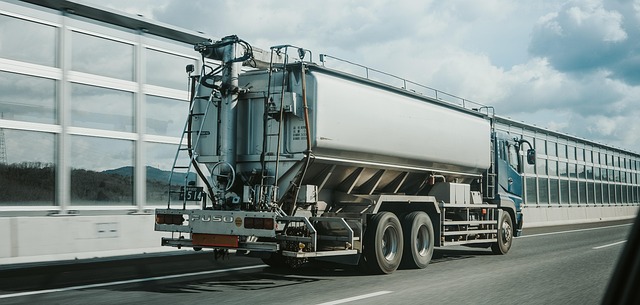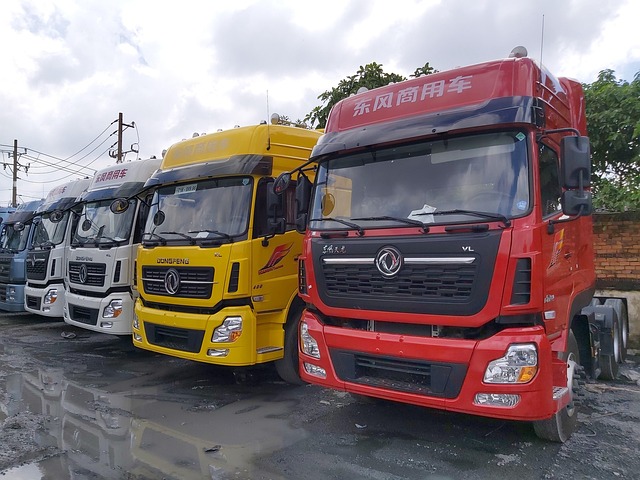Trucking companies face significant financial and operational challenges due to workers' compensation claims stemming from workplace injuries and illnesses. Proactive risk management is crucial, focusing on identifying common causes like fatigue-related accidents and slip-and-falls. Strategies include enhanced driver training, equipment maintenance, improved rest stop facilities, advanced health monitoring technologies, adequate rest periods, wellness programs, proper safety protocol training, use of personal protective equipment (PPE), regular vehicle maintenance, risk assessments, continuous improvement culture, telematics, predictive analytics, anonymous reporting, and data-driven decision-making using KPIs like incident rates and time off work. These measures not only reduce trucking workers compensation claims but also foster safer and more productive work environments.
In the dynamic world of trucking, managing risks and minimizing accidents is paramount. This article offers a comprehensive guide on proactive safety initiatives designed to drastically reduce trucking workers’ compensation claims. We’ll explore the intricate landscape of trucking workers’ comp, uncover common hazards, and provide actionable strategies for fostering a safer work environment. By implementing these measures, trucking companies can navigate the challenges with enhanced efficiency and improved safety outcomes.
Understanding Trucking Workers' Compensation: A Comprehensive Overview

Trucking companies, like any other industry, are well-acquainted with the significant financial and operational impacts of workers’ compensation claims. These claims, which are often related to workplace injuries or illnesses, can lead to substantial costs, including medical expenses, lost wages, and legal fees. In the trucking sector, where drivers are on the road for extended periods, managing safety is a complex task. Understanding trucking workers compensation involves recognizing the unique risks associated with this profession, such as long hours, heavy equipment operation, and exposure to diverse work environments.
A comprehensive overview should include an analysis of the most common causes of injuries among truckers—from fatigue-related accidents to slip-and-fall incidents in rest areas or loading docks. By identifying these hazards, companies can proactively implement safety initiatives. This may include enhancing driver training on safety protocols, ensuring proper equipment maintenance, improving rest stop facilities, and adopting advanced technologies for monitoring driver health and behavior. Such measures not only help reduce the frequency of trucking workers compensation claims but also contribute to a safer and more productive work environment.
Identifying Risks and Hazards in the Trucking Industry

In the trucking industry, identifying risks and hazards is a critical step in developing proactive safety initiatives to reduce workers’ compensation claims. Common dangers include loading and unloading operations, where slips, trips, and falls are frequent causes of injuries. Additionally, long hours and fatigued driving can lead to accidents, underlining the need for adequate rest periods and driver wellness programs.
Another significant risk is exposure to hazardous materials, whether it’s handling dangerous goods or navigating through areas with air pollution. Proper training on safety protocols, use of personal protective equipment (PPE), and regular maintenance of vehicles can mitigate these risks. By proactively addressing these hazards, trucking companies can foster a safer work environment, reduce the likelihood of workers’ compensation claims, and enhance overall operational efficiency.
Implementing Proactive Safety Initiatives: Strategies for Reduction

Implementing proactive safety initiatives is a game-changer in the trucking industry, aiming to reduce workers’ compensation claims and foster a safer work environment. These strategies go beyond reactive measures by focusing on preventive actions. By conducting regular risk assessments and identifying potential hazards, trucking companies can address issues before they lead to accidents or injuries. This includes ensuring proper training for drivers and maintenance personnel, implementing strict adherence to safety protocols, and promoting a culture of continuous improvement.
One effective strategy is the adoption of advanced technology such as telematics and predictive analytics to monitor driver behavior and vehicle performance in real-time. These tools can identify unsafe practices and help manage risks more efficiently. Additionally, encouraging open communication channels where workers can report concerns or near-miss incidents anonymously encourages a sense of collective responsibility for safety. Such initiatives empower trucking companies to proactively manage risks, ultimately reducing the financial and human costs associated with workers’ compensation claims.
Measuring Success and Continuous Improvement Techniques

Measuring success is a crucial step in evaluating the effectiveness of proactive safety initiatives. In the context of trucking workers’ compensation, this involves tracking key performance indicators (KPIs) such as incident rates, severity of injuries, and time off work. By setting clear goals and regularly reviewing data, companies can identify areas for improvement and make data-driven decisions. For instance, a significant reduction in claims over time indicates the success of safety programs.
Continuous improvement techniques like Lean Six Sigma or Kaizen events can further enhance these efforts. These methodologies encourage a culture of continuous learning and optimization. Regular training sessions, safety meetings, and open communication channels foster an environment where employees actively participate in identifying hazards and proposing solutions. This collaborative approach not only reduces claims but also strengthens the overall safety culture, ensuring ongoing proactive measures.
By proactively identifying risks and implementing safety initiatives, trucking companies can significantly reduce workers’ compensation claims. This comprehensive approach involves a thorough understanding of industry hazards, strategic safety program development, and continuous improvement techniques. By focusing on these key areas, businesses not only minimize financial losses but also create a safer work environment for their employees, fostering a culture of proactive safety that is essential in the trucking industry.
